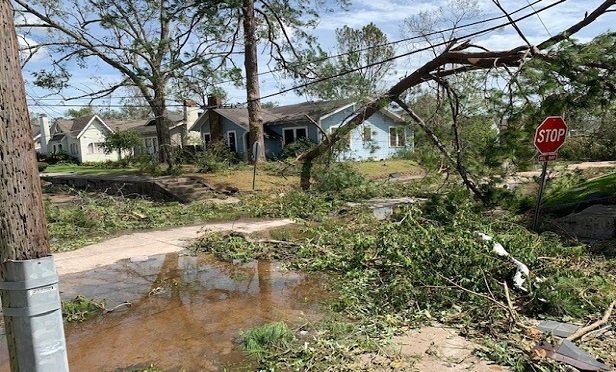 Hurricane Laura arrived as a Category 4 hurricane and spread devastation as it traveled inland through parts of Louisiana and Texas. Lake Charles, La., was one of the areas hardest hit by the storm as winds near 150 mph tore down trees and damaged buildings. (Photo: Courtesy of WeGoLook, a Crawford Company)
Hurricane Laura arrived as a Category 4 hurricane and spread devastation as it traveled inland through parts of Louisiana and Texas. Lake Charles, La., was one of the areas hardest hit by the storm as winds near 150 mph tore down trees and damaged buildings. (Photo: Courtesy of WeGoLook, a Crawford Company)
The strongest hurricane to hit the northwestern Gulf Coast in over 160 years swept through parts of Louisiana and Texas on Thursday (Aug. 27), knocking out power to hundreds of thousands of residents and creating fears of what government officials described as an 'unsurvivable' storm surge. Hurricane Laura thundered onto the coast as a Category 4 storm and traveled inland, decimating the town of Lake Charles, where it blew down buildings, bent trees in half like they were twigs, and caused a fire at a chemical plant. It then continued its trip inland, where it left extensive wind damage and flooding in its wake. So far, six deaths have been attributed to the storm.
Recommended For You
Want to continue reading?
Become a Free PropertyCasualty360 Digital Reader
Your access to unlimited PropertyCasualty360 content isn’t changing.
Once you are an ALM digital member, you’ll receive:
- Breaking insurance news and analysis, on-site and via our newsletters and custom alerts
- Weekly Insurance Speak podcast featuring exclusive interviews with industry leaders
- Educational webcasts, white papers, and ebooks from industry thought leaders
- Critical converage of the employee benefits and financial advisory markets on our other ALM sites, BenefitsPRO and ThinkAdvisor
Already have an account? Sign In Now
© Touchpoint Markets, All Rights Reserved. Request academic re-use from www.copyright.com. All other uses, submit a request to [email protected]. For more inforrmation visit Asset & Logo Licensing.







